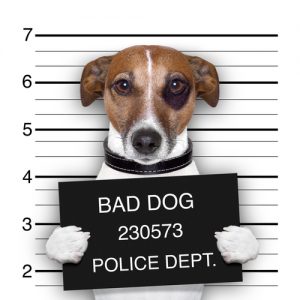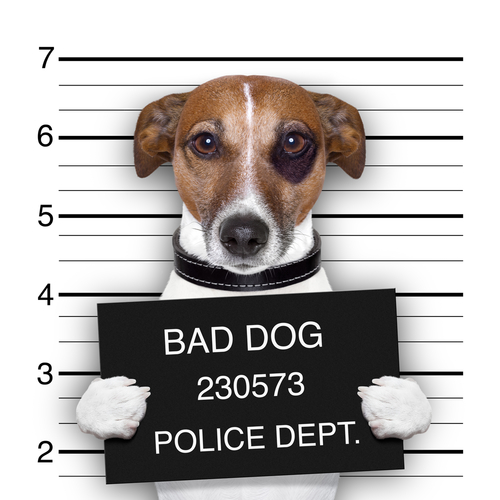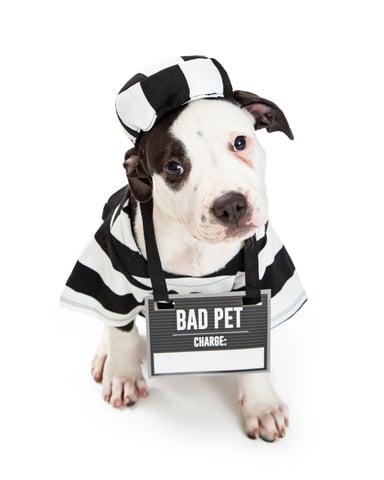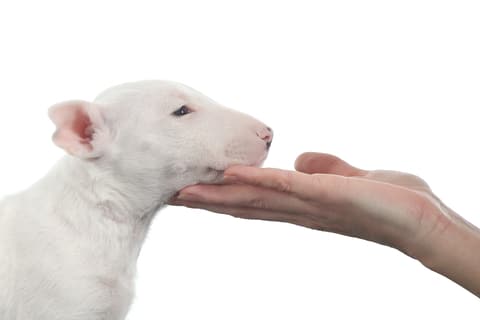A label can influence our behavior–which isn’t always a good thing.
Willie was a three-year-old Springer Spaniel when his owners, who lived in California, brought him to a a veterinary behaviorist for aggressive behavior. The vet behaviorist recommended euthanizing Willie for “idiopathic aggression.” Typical of many Springers, often described by owners as Dr. Jekyll and Mr. Hyde, it has sometimes (and incorrectly) been referred to as “Springer Rage Syndrome.” Willie was a sweet, affectionate dog that in the blink of an eye, turned into a vicious biter.
The diagnosis of “idiopathic” aggression means that there is no known cause for Willie’s unpredictable and unprovoked viciousness. In other words, we don’t know why Willie is biting, therefore we can’t change his behavior, so put him to sleep.
Hoping there might be another approach, Willie’s owners were referred to me to see if I would be willing to work with him in hopes of modifying his behavior. During our phone consultation, they described what led to this diagnosis. Willie had a hair-trigger bite response with no bite inhibition—he attacked suddenly and damagingly hard.
As I listened to the owners describing Willie’s behavior –what Willie actually did—the triggers for his aggression seemed totally predictable. I felt I could work with him, and Willie was flown to me for training.
Willie arrived in Boston with his veterinary records, including the behavior diagnosis work-up from the veterinary school where he was treated. It read, “Diagnosis: Idiopathic aggression consistent with ‘Springer rage.’ Treatment: There is no known treatment for idiopathic aggression. Prognosis: Poor. Recommendation: Euthanasia.” But there was far more to know about Willie’s behavior. Consider whether the following incident might have been predictable, and therefore easily avoided:
On every page of Willie’s medical records there was a warning at the top in red: “Muzzle” or “Must be Muzzled!” Despite these clear warnings, one of the events that led to his diagnosis of “idiopathic aggression” occurred during a check-up at a veterinary teaching hospital.
Willie was wearing the muzzle his owners put on him prior to his examination. Because Willie was seemingly calm, the teaching veterinarian decided to use Willie to demonstrate to his students how to muzzle a dog. He removed Willie’s muzzle. As the vet approached Willie to put the muzzle on, Willie attacked and bit him quite aggressively. Was this “idiopathic aggression?” Was this an unpredictable “rage” response? Of course not! You could have bet the farm that Willie was going to bite this veterinarian when he tried to muzzle him.
The “idiopathic aggression” label was unhelpful in managing or modifying Willie’s behavior. Willie was a resource guarder. Toys, food, bed, even himself – were all “resources” to Willie. If he had something that he felt you threatened to take, he’d bite to protect it.
Even if he didn’t have anything in his mouth, if you simply asked “What do you have?” Willie’s pupils dilated, he stiffened, growled and any movement toward him would trigger an attack. Not idiopathic; this was a learned behavior – classical conditioning.
Willie’s triggers were easily identified and managed, and his training went well.. When I returned Willie to his owners—trained and with a management plan—I never expected to see him again. A year later, however, a change in his owners’ lives forced them to give him up. Because of his history and management requirements, Willie was either going to be euthanized, or adopted by me. Being a foolish dog trainer who loved this dog and couldn’t accept his being killed, when his owners offered him to me, I adopted him.
Renamed Hobbes (a paper tiger), he lived to the age of 12—a bratty, wonderful dog who taught me more about reestablishing trust than any other dog I’ve owned. Far from having idiopathic aggression, Hobbes’ predictable biting was avoided through management, rehabilitation, desensitization and training.
As Hobbes’ story demonstrates, labels are unhelpful. By describing and explaining what the dog is doing, we are better able to work with and modify the dog’s behavior. A happier outcome for all.








